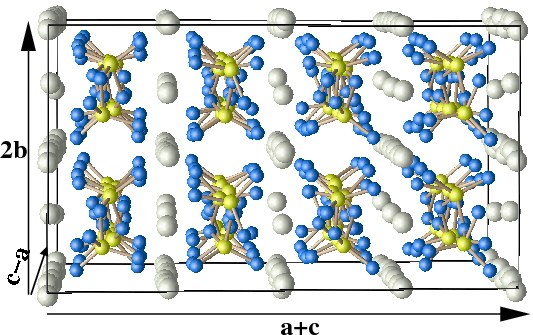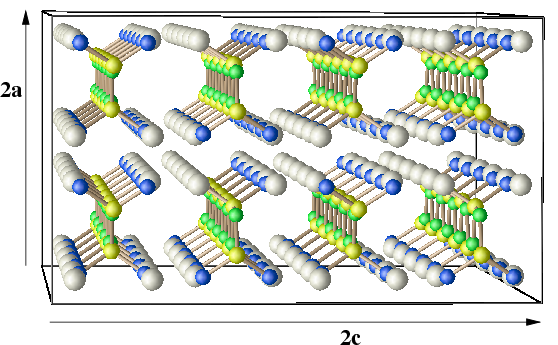 Undergraduate Research:
Undergraduate Research:
 Undergraduate Research:
Undergraduate Research:
 |
 |
| Ball and stick diagram of natural LiPO3 | Ball and stick diagram of computed Li2PO2N |
| Balls represent Li (white), oxygen (blue), and phosphorus (yellow) | Balls represent Li (white), oxygen (blue), nitrogen (green), and phosphorus (yellow) |
 | Equivalent circuit for a typical material used in batteries. |